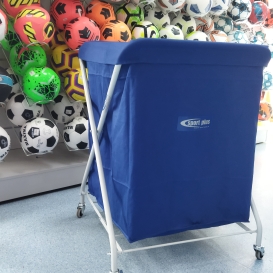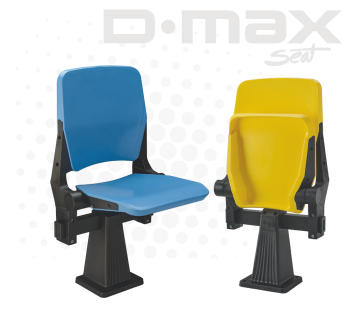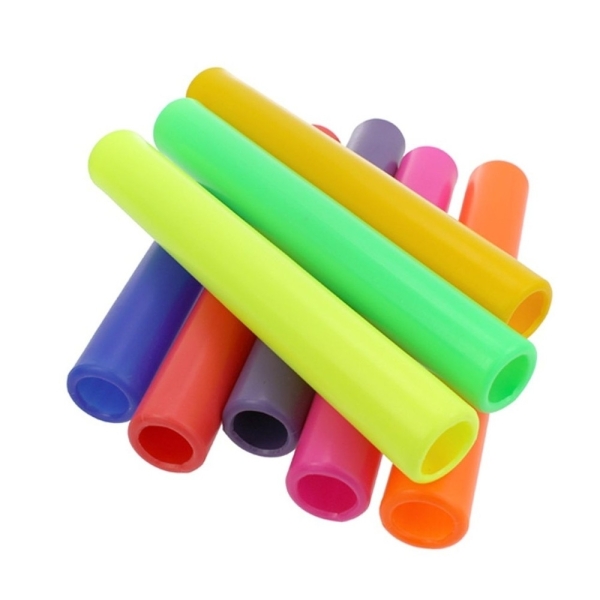Viewed products
-
Spokey backpack, Fuji 5L, 925842, blue color
Catalog no: 85-20473
See details60.00 PLN Tax inc.48.78 PLN Net
Relay sticks
Relay batons are an indispensable part of any professional and amateur relay, which ensures the smooth passing of the baton during the run. We offer both aluminum and plastic models. All models are ideal for school competitions and training. Some batons meet WA standards, which makes them professionally applicable and an ideal choice for championships and athletes of all levels.One for all, all for one - that's relay batons!
More useful information can be found at the bottom of the page.-
Aluminum relay baton
22.98 PLN Tax inc.18.68 PLN NetCatalog no: 12-40008
Availability: Delivery within 24-48 hours -
High-performance relay baton (IAAF certificate of conformity)
28.91 PLN Tax inc.23.50 PLN NetCatalog no: 12-40012
Availability: Delivery within 24-48 hours -
Plastic relay baton
5.04 PLN Tax inc.4.10 PLN NetCatalog no: 12-40010
Availability: Delivery within 24-48 hours -
Aluminum relay baton
15.01 PLN Tax inc.12.20 PLN NetCatalog no: 12-40007
Availability: Delivery within 24-48 hours
Helpful information about relay sticks in a nutshell
1 Types and materials
- Relay batons are a key element in relay running, and their choice can affect the game and the outcome of the competition. Depending on the purpose, the level of the athletes and the specifics of the competition, there are different types of batons available, made of a variety of materials, which directly affects their characteristics and use.Aluminum relay batons
- Aluminum is the most commonly used material in the production of professional relay batons. Batons made of aluminum are characterized by exceptional durability, lightness and proper balance, which allows for a firm grip and quick passing of the baton during the run. These properties make them an ideal choice for intermediate and professional level competitions.
- Among aluminum relay batons, one can distinguish between standard models and high-performance models. Standard models, often powder-coated, are available in a wide range of colors, allowing easy identification of teams during competitions. On the other hand, high-performance batons, designed for professional competitions such as championships, meet the rigorous standards of World Athletics (WA). They tend to be thinner and lighter, which increases their aerodynamics and therefore the speed of baton transfer. Their surface is painted with special powder coatings, which increases their resistance to scratches and mechanical damage.
Plastic relay batons
- This is a solution dedicated primarily to the training of younger or less experienced athletes and less formal competitions, such as school competitions. Plastic is a lighter material than aluminum, making the baton easier to handle, especially for younger athletes. These batons are also more economical, making them a popular choice in the context of physical education classes or local sports competitions.
- It is worth noting that plastic relay batons are available in a variety of colors, which adds charm and variety to the use of the equipment, from school games to amateur sports competitions.
Differences in use and properties
- The appropriate material of the baton depends on one's own purposes and needs, for which the equipment is to be used. Due to the properties of aluminum batons, they are preferred in professional competitions, where every fraction of a second and the stability of the handover counts. Their resistance to mechanical damage makes them long-lasting, even under heavy use.
- Plastic sticks, although lighter and more economical, may not meet the requirements of professional competitions. For this reason, they are a better choice for training, school competitions or less formal sporting events. For many youth and amateur teams, they represent an ideal compromise between quality and price.
2 Application and functionality
- Choosing the right relay baton is a decision that can have a significant impact on the course and outcome of competitions, regardless of the level of athletes. The variety of relay batons allows you to tailor the equipment to your specific needs, the characteristics of the competition and the preferences of the users.Relay batons for different levels of competition
- Depending on the level of competition - from school competitions to local and regional competitions to international championships - the requirements for relay batons can vary. For beginners and younger athletes just starting out in relay running, lighter plastic batons that are easier to hold and pass are often recommended. Their lighter weight makes it easier to control the baton, which is especially important when learning the passing technique.
- For more advanced athletes and teams competing in more serious competitions, aluminum relay batons are recommended. Aluminum, due to its strength and lightness, offers excellent handling qualities, allowing for precise and fast baton passing, which is crucial in high-level competition. Aluminum batons are also more resistant to mechanical damage, making them ideal for intensive training and competition.
- In professional-level competitions, where every second and the smallest details count, only sticks that meet strict standards for weight, length, diameter and material are used. In such cases, it should be borne in mind that the choice of the right baton can affect the handing technique, the comfort of the players and even the outcome of the race.
- It is also worth mentioning the use of relay batons in training. For athletes preparing for competitions, it is important to train with the baton that will be used at the competition to get used to its weight, length and the way it is held. Regular training with the right baton allows you to develop the ideal passing technique, which can translate into valuable fractions of seconds during the competition.
Practical tips for use and maintenance
- Aluminum batons, due to their technical properties such as powder-coated aluminum, are resistant to most mechanical damage. However, in order to ensure that the equipment shines new for as long as possible, it is a good idea to wipe and clean the baton from time to time, so that it will retain its aesthetic color and shine.
- Plastic relay sticks, while more weather-resistant, can be more prone to scratches and deformation with heavy use. It is important to monitor the condition of the equipment for the comfort and safety of athletes during training and competition.
- Storing relay batons in proper conditions, such as a dry and cool place, away from direct sunlight, will also prolong their life.
3 Certifications and standards
A certificate of compliance is often required by organizers of major sporting events such as world championships, the Olympic Games and even regional and national competitions. Sticks that do not have the proper certification may not be allowed to be used, which could result in a team's disqualification if used in an official race.Certification of equipment
- In order for a relay baton to be used in an official competition, it must be properly certified to comply with World Athletics regulations. Such certification is issued by approved certification bodies, which conduct detailed testing and analysis of each production batch. The certification confirms that the baton meets all dimensional, weight and material requirements, which is crucial for its release for competition.
- The certification process also includes strength tests and quality control of workmanship. The batons must pass a series of tests that check their resistance to mechanical damage, behavior in various weather conditions and stability of dimensions after repeated use. This ensures competition organizers that every baton used during the competition is fully compliant and will not give any team an unfair advantage.
The importance of certification in practice and the standards set by World Athletics
- According to World Athletics guidelines, each relay baton, in order to be approved for use in official competitions, must meet certain standards for dimensions, weight, material and construction.
Dimensions: the baton should have a length between 28 cm and 30 cm and a diameter of 3.5 to 4 cm (36-40 mm).
Weight: chopsticks must weigh at least 50 grams, although in practice chopsticks weighing between 60 and 90 grams are most commonly used.
Material: must be uniform and must not contain additional elements, such as non-slip coatings, which could give an unfair advantage. The most commonly used materials are aluminum and plastic, with aluminum sticks dominating professional-level competitions, which are preferred for their light weight and durability.
Note: standards and regulations governed by World Athletics may be updated, supplemented or changed in the future. Previously stated data are indicative only and may not reflect the actual state of affairs. The date of writing this article is 09.08.2024, so we recommend that you verify the regulations yourself on the official World Athletics website.
- Following standards and having certification is key to ensuring that all teams compete on a level playing field. Each athlete should be sure that the equipment they use does not differ in quality or performance from the equipment used by other athletes. This ensures fairness and equity in competition, which is the foundation of any sport. WA certification confirms that the manufacturer cares about the highest quality products and meets all international standards.
We encourage you to browse our range of relay batons or contact us so that we can choose the most suitable and adequate equipment to suit your needs.










